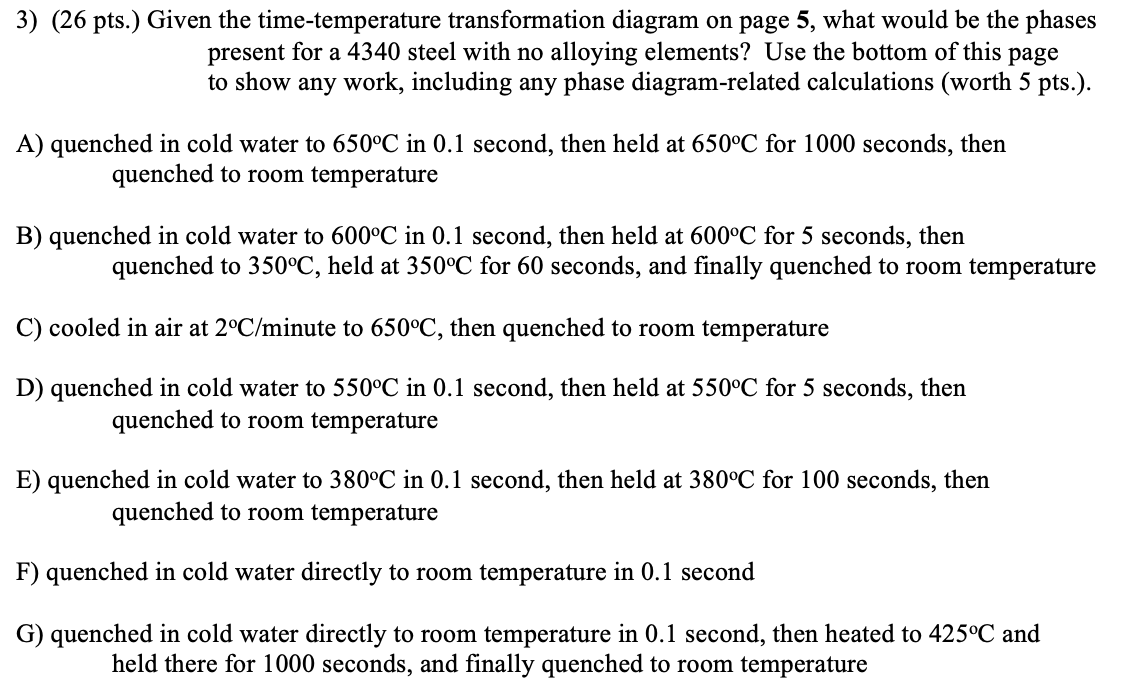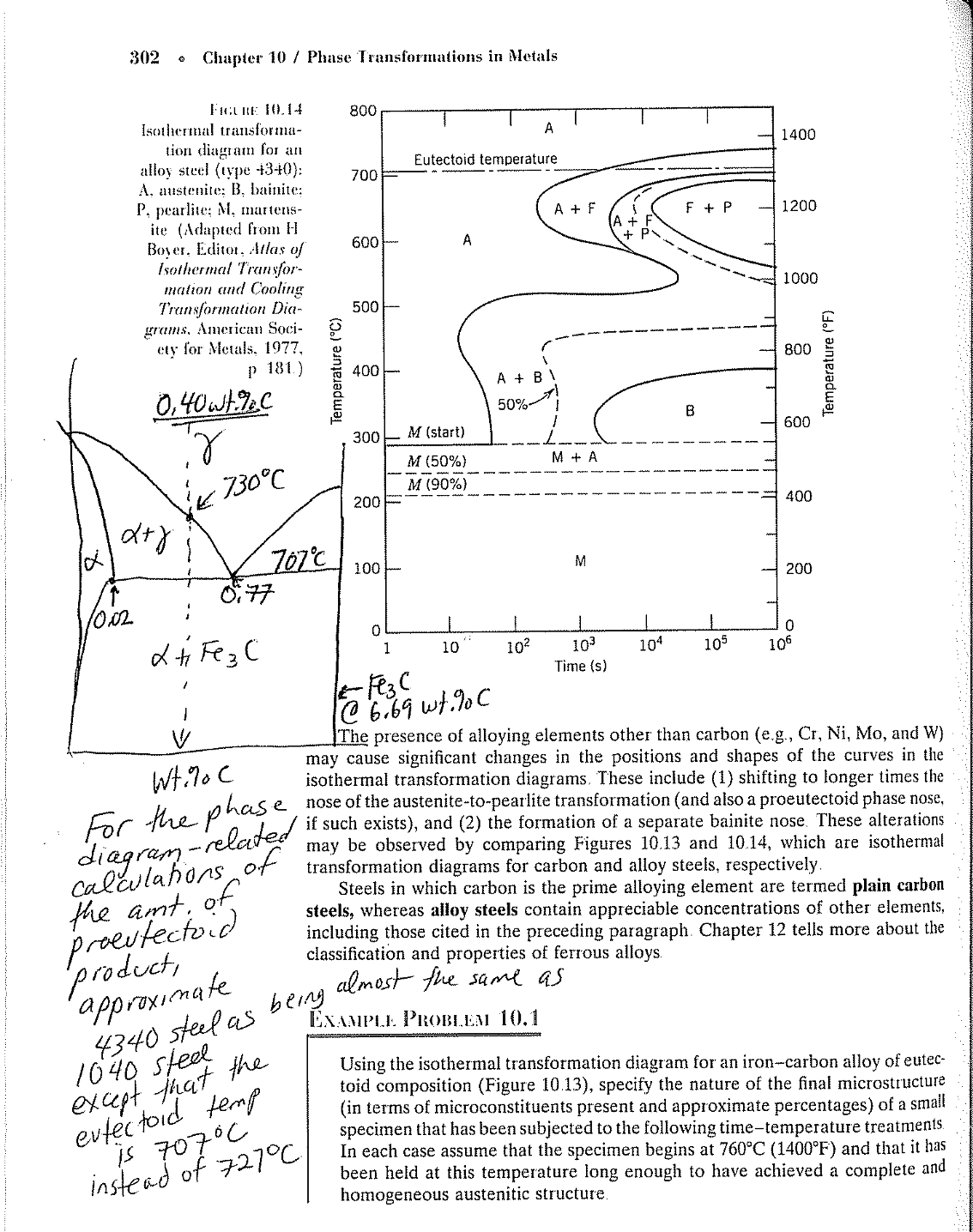

3) (26 pts.) Given the time-temperature transformation diagram on page 5 , what would be the phases present for a 4340 steel with no alloying elements? Use the bottom of this page to show any work, including any phase diagram-related calculations (worth 5 pts.). A) quenched in cold water to 650C in 0.1 second, then held at 650C for 1000 seconds, then quenched to room temperature B) quenched in cold water to 600C in 0.1 second, then held at 600C for 5 seconds, then quenched to 350C, held at 350C for 60 seconds, and finally quenched to room temperature C) cooled in air at 2C/ minute to 650C, then quenched to room temperature D) quenched in cold water to 550C in 0.1 second, then held at 550C for 5 seconds, then quenched to room temperature E) quenched in cold water to 380C in 0.1 second, then held at 380C for 100 seconds, then quenched to room temperature F) quenched in cold water directly to room temperature in 0.1 second G) quenched in cold water directly to room temperature in 0.1 second, then heated to 425C and held there for 1000 seconds, and finally quenched to room temperature 302 - Chapter 10 / Phase Transformations in Metals IH:L IIt: 10.14 Isohicmal transforma- tion diatram for an alloy steel (yje+3+0) : A, anstenite: B, bainite: P, pearlite; M, martens- ite Addapted from H Boyer. Editor. Alas of Isothermal Transfor- mation and Coolingr Trunsformalion Dia- groms, American Soci- ery lor Meats, 1977, =0.01 The presence of alloying elements other than carbon (e.g., Cr,Ni,Mo, and W ) Wt mo may cause significant changes in the positions and shapes of the curves in the isothermal transformation diagrams. These include (1) shifting to longer times the For the phase nose of the austenite-to-pearlite transformation (and also a proeutectoid phase nose. diagram-related if such exists), and (2) the formation of a separate bainite nose. These alterations diagram-related may be observed by comparing Figures 10.13 and 10.14 , which are isothermal the amt of Steels in which carbon is the prime alloying element are termed plain carbon the amt,of, steels, whereas alloy steels contain appreciable concentrations of other elements, pioduct, classification and properties of ferrous alloys. approximate being almost the same as 4340 steelas berime Piobi.en 10.1 1040 steel the Using the isothermal transformation diagram for an iron-carbon alloy of eutecexcept that p toid composition (Figure 10.13), specify the nature of the final microstructure evtectoid femp (in terms of microconstituents present and approximate percentages) of a small evtec fold 77C specimen that has been subjected to the following time-temperature treatments \begin{tabular}{c|l} is 707 \\ instead of 727C & Ineachcaseassumethatthespecimenbeginsat760C(1400F)andthatithasbeenheldatthistemperaturelongenoughtohaveachievedacompleteandhomogeneousausteniticstructure \end{tabular}








